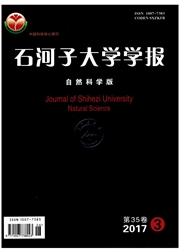

 中文摘要:
中文摘要:
在田间条件下,选用棉花品种新陆早45号为试验材料,研究长期干旱后复水后棉花新发育叶片的光合能力、比叶重和碳氮比的变化过程。结果表明:在整个测定周期内,干旱后复水新发育叶片的净光合速率、气孔导度和叶面积明显高于对照,叶片叶绿素含量和氮含量也有不同程度的增加,差异最大时,分别高于对照处理25.66%和50.34%;干旱后复水新发育叶片不仅具有较高的氮含量,而且碳氮比上升时间也较早。这表明棉花经过长期干旱后复水叶片光合特性发生了变化,较高的气孔导度、叶绿素含量和氮含量都为叶片较高的净光合速率提供了基础条件;而碳氮比较快上升可能是干旱后复水棉株光合物质更多用于生殖生长。
 英文摘要:
英文摘要:
In order to study the changes of rewatering after long-term drought stress on cotton,we used up-land cultivar Xinluzao 45 as the materials to measure the photosynthetic capacity,specific leaf weight and carbon-nitrogen ratio (C/N)in developing leaves.The results showed that the net photosynthetic rate,stomatal conductance and leaf area of developing leaves increase undergoing rewatering after long-term drought stress,the content of chlorophyll and nitrogen also increased to varying degrees.The content of nitrogen in the developing leaves after rewatering increased,and the time of C/N ratio also rose earlier. Our results indicated that the photosynthetic characteristics of leaves changed undergoing rewatering after long-term drought stress.The higher content of chlorophyll,nitrogen,and stomatal conductance could provide basic conditions for the higher net photosynthetic rate.The time of C/N ratio rising earlier in developing leave after rewatering probably suggested that the photoassimilate of cotton inclined to reproductive growth after rewatering.
 同期刊论文项目
同期刊论文项目
 同项目期刊论文
同项目期刊论文
 期刊信息
期刊信息
